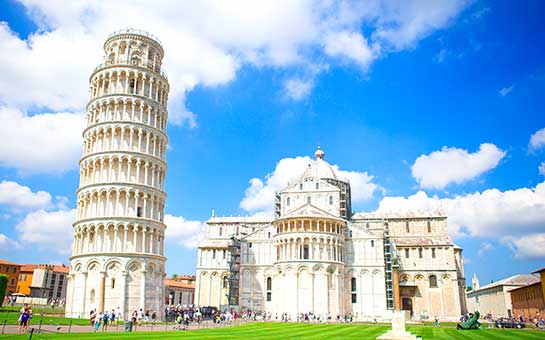Your Italian vacation starts with making a plan and getting the right travel insurance. You may be wondering, "Do I need travel insurance to go to Italy?" If you need a Schengen visa to travel to Italy, travel insurance is required. Even if you are able to travel to Italy without a visa, travel insurance is highly recommended for financial peace of mind.
So, before your trip to Italy, lock down a date, purchase airfare and accommodations, and be sure to get travel medical insurance before you go.
Travel Medical Insurance for Travelers in Italy – FAQs
Is there an Italy travel insurance requirement? If you're traveling from the USA, Canada, Australia, or any other country whose residents don't need a Schengen visa to visit Italy for less than 90 days, medical insurance Italy is not mandatory, but it is highly recommended.
For travelers with a Schengen visa, compliant health insurance is a requirement. However, due to the high cost of medical treatment in Italy, all visitors should carry travel medical insurance, regardless of requirement.
Why buy travel medical insurance before traveling to Italy?
Think about the last time you got sick or injured. Did you have any sort of advanced warning that it would happen? Most likely not. The same will likely hold true on your trip to Italy. Illnesses and injuries can come out of nowhere, and suddenly you need to seek medical attention.
The difference is, outside of your home country, there's a good chance your domestic health insurance won't be applicable. When medical care is a necessity and you don't have insurance, you could end up stuck with a bill totaling many times what you spent on your entire trip.
Italy has wonderful medical facilities that can provide excellent care, but you'll need a way to pay for your treatment. Travel medical insurance is designed to provide coverage for necessary medical treatment during your trip to Italy. A comparatively small investment in insurance can save you a lot of money.
What is the Best Travel Insurance for Italy?
If you're visiting Italy on a Schengen visa, you need to purchase insurance that provides at least €30,000 in medical coverage, as well as coverage for emergency medical evacuation and repatriation of remains in order for it to be compliant.
You also need to consider what you plan to do in Italy. Different activities carry different levels of risk, and you may need specific insurance to cover them. For instance, if your Italian trip includes skiing in the Alps or sailing off the coast, you'll want to make sure to get insurance that provides coverage for those activities.
Before You Travel to Italy - Do This
- Learn some basic Italian. Not everyone knows English, especially outside of larger cities. It can be a big help when ordering food or getting directions.
- Take the train. Rail service between Italian cities is fast and comfortable, with beautiful views to boot.
- Insure your trip with Italy travel insurance. Buy travel medical insurance to help mitigate your financial losses in case of the unexpected.
